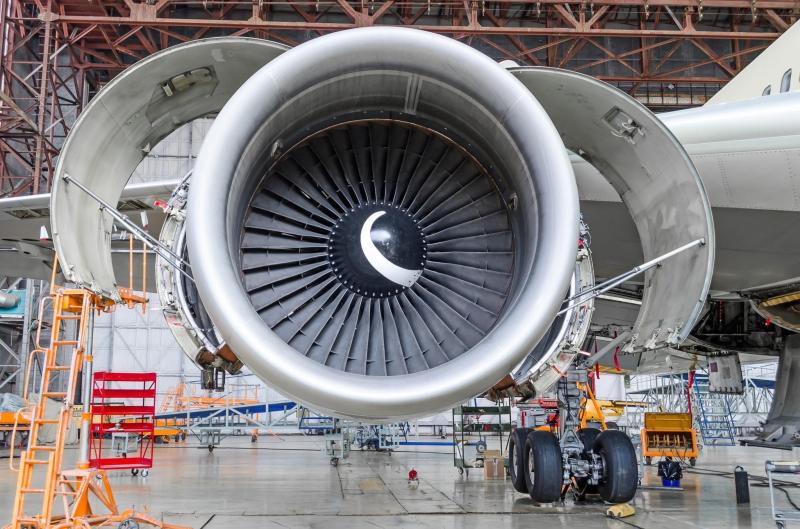
Aerospace stakeholders contemplate path to recovery
09.11.2020 Filed in: aerospace
Then this week, Boeing revealed it will be reducing its workforce by 16 percent by the end of 2021 due to decreased revenue and cashflow. While the company didn’t specify how many of those workers are based out of Puget Sound, it currently has no future use planned for the Everett assembly plant or the workers there once Dreamliner production is moved out of state.
Overall, the industry has lost 6,000 jobs in the first three fiscal quarters of 2020 compared to the same time period in 2019. Aerospace exports from Washington this year are at $7.8 billion, compared to $25.7 billion in 2019 and $42 billion in 2018.
The aerospace sector is deeply entrenched in Washington’s economy: it provides the most jobs in the state, and its health is connected to the state’s trade market, supply chain producers, and other companies that in turn rely on its presence. Altogether, aerospace supports 240,000 direct and indirect jobs and generates $73 billion in gross business income.
Yet despite recent setbacks, some industry members say Washington is, and can remain, a long-term competitive state for further aerospace development. At the same time, however, airline companies are preparing for persistent, near-term setbacks.
Currently, nationwide travel is down 63 percent compared to last year. Alaska Airlines State Government Affairs Manager Scott Kennedy told the Senate Special Committee on Economic Recovery at its Oct. 27 meeting that it doesn’t anticipate passenger levels to return to 2019 levels for roughly four years. The company has 10,000 employees in Washington – almost half of its entire workforce.
“We know that it’s going to take time to fully recover from this,” he said. “We think recovery is going to be…slow upward…in the months and years ahead.”
Teal Group Corporation Vice President Richard Aboulafia made a similar assessment, saying the pandemic knocked “four years of growth out of the air transport system, with tremendous damage to the demand for jetliners.” His company conducts aerospace market analysis.
Kennedy added that corporate travel has been hit even harder, with an 85.4 percent decrease compared to 2019. “We do expect that this is going to stay down for a longer period of time.”
The drop in air travel has also corresponded with decreased Boeing production, with just 67 new orders so far this year compared to 803 orders through September 2018.
Yet, Society of Professional Engineering Employees in Aerospace (SPEEA) Executive Director Ray Goforth told the committee that “the pandemic has really just accelerated decisions that aerospace companies were already making, and these problems aren’t going to go away when the pandemic goes away.” One such contributing factor to these decisions has been the trade war with China; in 2015 the country ordered 215 planes but none since 2017.
Goforth said that Washington can still capture new aerospace manufacturing in part by retaining its current workforce, which he described as the “best competitive advantage. The focus of the legislature should be how do we attract additional work whether it’s from Boeing, from the supply chain or from Airbus. I think growing the aerospace sector overall should be the focus of the legislature.”
Aerospace Machinists Union District 751 President Jon Holden told the committee: “Washington state is still well prepared to support the aerospace industry of today and the future.”
While Boeing officials defended the company’s decision to consolidate Dreamliner manufacturing in South Carolina in response to decreased production, critics such as Holden believe it was a short-sighted choice to avoid union bargaining.
“Leadership there needs to make a decision on their next airplane program,” Holden said. “It seems that they’re paralyzed with indecision, and that could be a fatal flaw. As each year goes by that they don’t offer a competitive airplane in the 220-270 seat market, they will lose more and more market share to Airbus.”
In addition to further state investments in higher education programs tied to aerospace such as software engineering to further expand the state’s workforce, Goforth encouraged lawmakers to engage in discussions with Boeing. “Every company has its own culture. Boeing culture tends to react negatively when they perceive someone is telling them how to run their business. Reaching out to them and saying: ‘Hey what can we do to assist you?’…would probably be more successful.”
There are no more meetings scheduled this year for the Special Committee on Economic Recovery.
Announcement from Integrity Engineering & Design Solutions
As businesses are scaling, finding the right talent to meet your needs requires frustrating onboarding logistics, countless hours of training, and increased overhead through employee compensation. Integrity-EDS, will soon be announcing the launch of our next-generation mobile and desktop platform, enabling leaders to hire on-demand talent for as long or as short as necessary. In turn, teams can achieve maximum efficiency without unnecessary downtime, skill development, or overhead.
Interested in learning more?
Click on "Find Out More" below for access to exclusive launch & platform information, feature updates, and beta testing opportunities,
